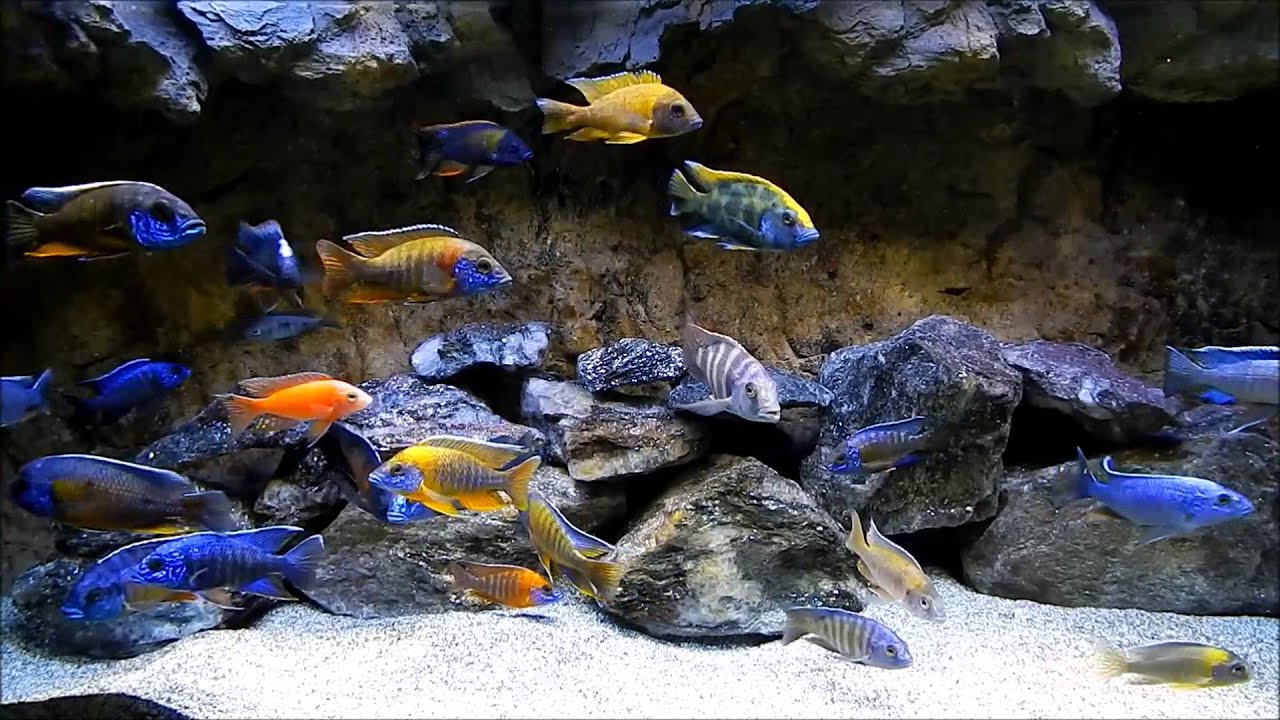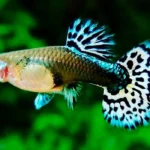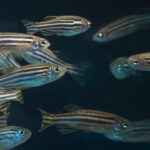Cichlids You’ve just met a cichlid—nature’s showpiece and, quite possibly, the most charismatic fish in freshwater aquariums. But there’s more to cichlids than just good looks. Behind all those shining scales is a realm of incredible behaviour, sophisticated social hierarchies, and limitless variety.
So, what makes these fish so special? Why are aquarists around the globe obsessed with them? Grab your net, because we’re diving deep into the vibrant, bold, and sometimes dramatic world of fish.

Meet the Cichlids—A Global Phenomenon
African Rift Lakes: Home to some of the most vibrant and popular species like the electric yellow Labidochromis caeruleus, the peacock cichlid (Aulonocara spp.), and the mighty frontosa (Cyphotilapia frontosa).
South America: Think oscars (Astronotus ocellatus), angelfish (Pterophyllum spp.), and discus (Symphysodon spp.)—all majestic in their own right.
Central America: Jack Dempseys, convicts, and firemouths dominate this scene.
Asia: A few species, such as the Etroplus genus, are native to parts of India and Sri Lanka.
A Rainbow of Species
Few fish are a match for cichlids in terms of sheer diversity. The cichlid family comprises one of the most diverse groups of vertebrates on the planet, second only to a very few bird and insect families. It is the diversity that provides them with a never-ending, fascinating quality to experiment with and breed.
Some of the most universally recognised species include:
Peacock Cichlids (Aulonocara spp.)
Renowned for their radiant colors—neon blues, hot reds, and brilliant oranges—peacock cichlids are mellow relative to many of their African relatives. Their easy-going nature and beautiful appearance make them a hit among the African aquarium community.
Oscar (Astronotus ocellatus)
These South American brutes are full of personality. Oscars become familiar with their owners and might even beg for food. But be warned: they can grow large and need roomy tanks and heavy filtration.
Discus (Symphysodon spp.)
Commonly referred to as the “kings of the aquarium,” discus are water quality but treat owners to entrancing patterns and colors.
Convict fishs (Amatitlania nigrofasciata)
Named for their striped-prison pattern, these Central American natives are extremely robust and simple to breed, a good starter fish.
Mbuna Cichlids (Various genera from Lake Malawi)
These fish that live on rocks are aggressive and territorial, but their colors compare with saltwater fish.

Behavior Fit for Royalty
Fish don’t only appear cool—they behave cool. Their own behavior is compared to animals known to be smarter. Here’s why they’re different:
Territoriality
Fish tend to be aggressively territorial. Males will claim and guard territory, particularly when breeding. This is especially true for mbuna cichlids and Central American species such as the Jack Dempsey.
Parental Care
Few fish are as devoted to parenting as fish are. Many mouthbrood, holding eggs and fry in their mouths to shield them from other predators. Some dig holes and fiercely guard their young.
Social Structures
In others, males set up harems, and in others, they create strict hierarchies. Observing them is like observing a soap opera—dramatic, with alliances and occasional turncoats.
Learning and Memory
Some fish are capable of learning feeding times, identifying their owners, and even learning to differentiate between various humans. It’s that interactive nature that has aquarists hooked for life.
Setting Up a Cichlid Tank
Tank Size
Larger is better. Fish, particularly African and South American, require room. A 55-gallon tank is an excellent size for a small grouping.
Water Parameters
African Cichlids (Malawi, Tanganyika, Victoria): Prefer hard, alkaline water (ph 7.8–8.6).
South American fish (discus, angelfish): Prefer soft, acidic water (ph 6.0–7.0).
Central American fish : Can tolerate a wide range but do best in slightly alkaline water (ph 7.0–8.0).
Substrate and Decor
African species thrive with sand or fine gravel and plenty of rock structures.
South American species appreciate driftwood and leaf litter.
Territory is critical, so offer caves, crevices, and hiding spots.
Filtration and Maintenance
These are messy eaters. Spend the money on a high-quality canister or sponge filter and be prepared for regular water changes, at a minimum of 25–50% per week.
Lighting and Plants
These will dig, which will devastate live plants. Think of hardy species such as Java fern or Anubias attached to driftwood. Light will be moderate to simulate natural conditions.

Diet Fit for a King
General Feeding Tips
Feed high-quality pellets or flakes as the staple.
Supplement with frozen or live foods like bloodworms, brine shrimp, and daphnia.
Offer blanched veggies like spinach, peas, or zucchini for herbivorous species.
Avoid Overfeeding
These will eat till kingdom come. Overfeeding results in bloating, poor water quality, and disease. Feed them only what they can digest in 2–3 minutes, twice daily.
Tank Mates—Friends or Foes?
Good Tank Mates
African cichlids: Other fish from the same lake, such as synodontis catfish and bristlenose plecos.
South American : Corydoras, tetras (with caution), and peaceful plecos.
Central American : other robust, similarly sized cichlids and larger catfish.
Avoid
Slow or timid fish like guppies, gouramis, or bettas.
Shrimp or small snails—they’ll likely become lunch.
Mixing African and South American cichlids unless water parameters match and aggression is managed.
Common Health Issues and How to Prevent Them
Ich (White Spot Disease)
Symptoms: White spots, rubbing against surfaces.
Treatment: Raise temperature slightly, treat with ich medication.
Bloat
Symptoms: Swollen belly, loss of appetite.
Causes: poor diet, overfeeding, internal parasites.
Prevention: Avoid fatty foods and keep your diet varied.
Hole-in-the-Head Disease
Symptoms: Pitting on the head, loss of color.
Causes: Poor water quality, nutritional deficiencies.
Treatment: Improve water conditions, medicate as needed.
Fin Rot
Symptoms: Frayed or disintegrating fins.
Treatment: Water changes, antibacterial treatment.
Why Cichlids? The Passion Behind the Hobby
These are not merely swimming fish. They engage with each other. They construct nests. They have memory. They fight and romance and nurture their offspring. Observing them is to see nature’s drama play out in the moment.
Their diversity of color and activity means that there is a fish to suit every person, whether hardy fish for the novice aquarist or rare species ready to be bred by the experienced aquarist.

Conclusion
These are more than aquarium fish—they’re brilliant characters in dazzling attire, monarchs of their thrones with intelligent behavior, cunning intelligence, and undeniable charm. From their astounding colors to their in-your-face aggression and devoted parents, each and every cichlid species is a tale of its own. They challenge, they captivate, and they pay you back with a constantly changing aquarium drama that you never tire of.
But with that grandeur comes duty. These queens and kings require the proper water, room, diet, and attention. They’re not for the faint of heart, but for those who are willing to learn and adjust, the world of cichlids expands into something absolutely phenomenal.
Whether you’re enamored with the electric colors of an African mbuna or the dignified elegance of a South American discus, cichlids have something unique in the freshwater aquarium hobby: a living work of art of color, behavior, and life.
FAQs
Are cichlids good for beginners?
Yes—and no. Certain fish, such as convict cichlids, kribensis, and angelfish, are wonderful for newbies since they’re tough and resilient. Yet others, such as discus or nasty African species, demand more experience. Begin with beginner-friendly varieties and progress from there.
How big do cichlids get?
These sizes vary greatly. Dwarf species like Apistogramma remain below 3 inches, whereas oscars can measure 12–14 inches or more. Always investigate the adult size of a species prior to introducing it to your tank.
Can cichlids live with other fish?
It varies depending on the species. Some species are peaceful, and some are very territorial. African fish are best kept in species-only tanks, while South American fish can be kept with compatible fish such as tetras or catfish. Always carefully match tank mates.
How aggressive are cichlids?
The majority of fish are territorial and can act aggressively, especially when mating. African rift lake fish and Central American fish are particularly boisterous. Aggression can be reduced through proper stocking, design, and tank size.
Can cichlids change color?
Yes! These also change color based on mood, stress, breeding, dominance, or sickness. A healthy, stress-free environment will ensure that their best colors remain.










